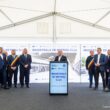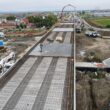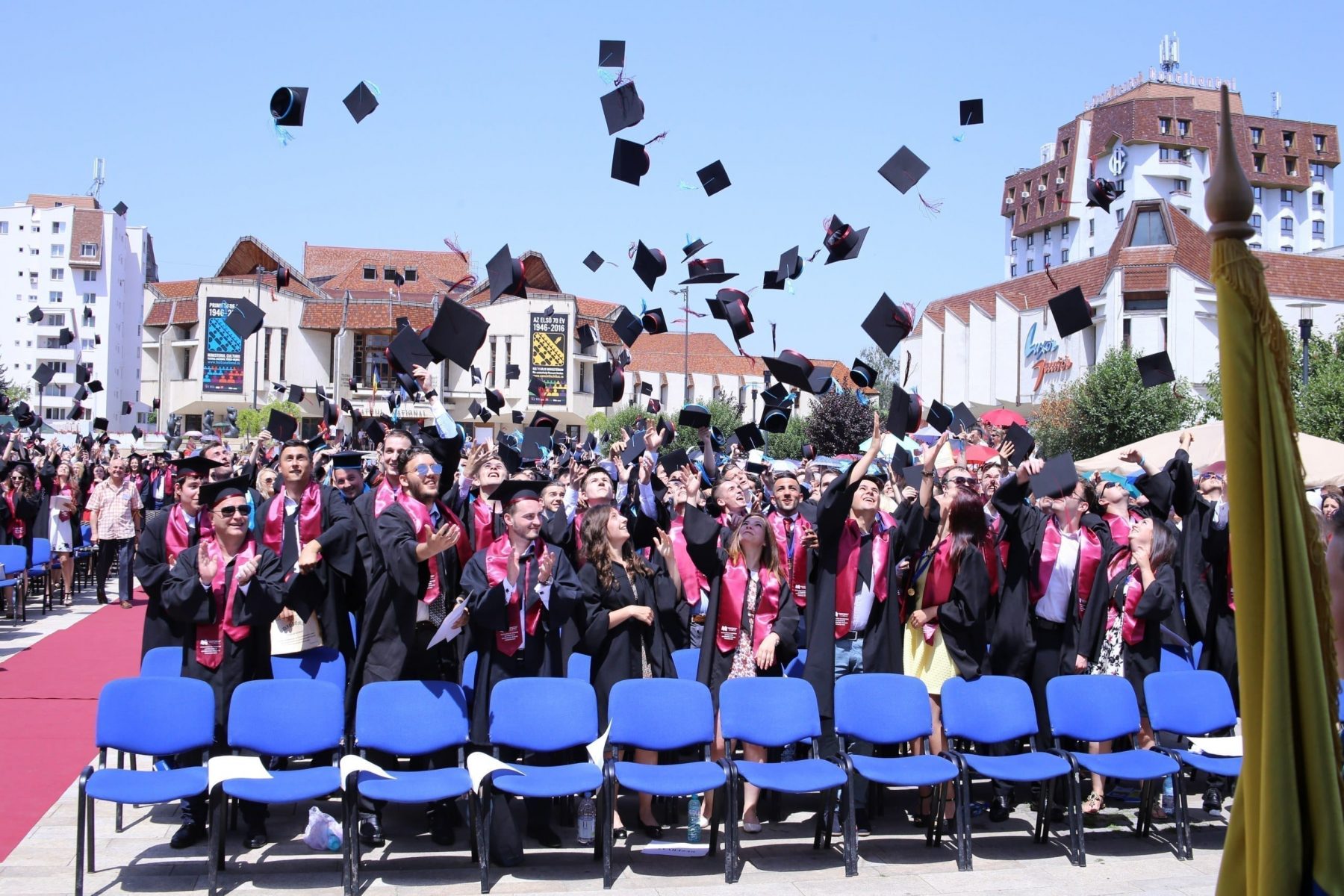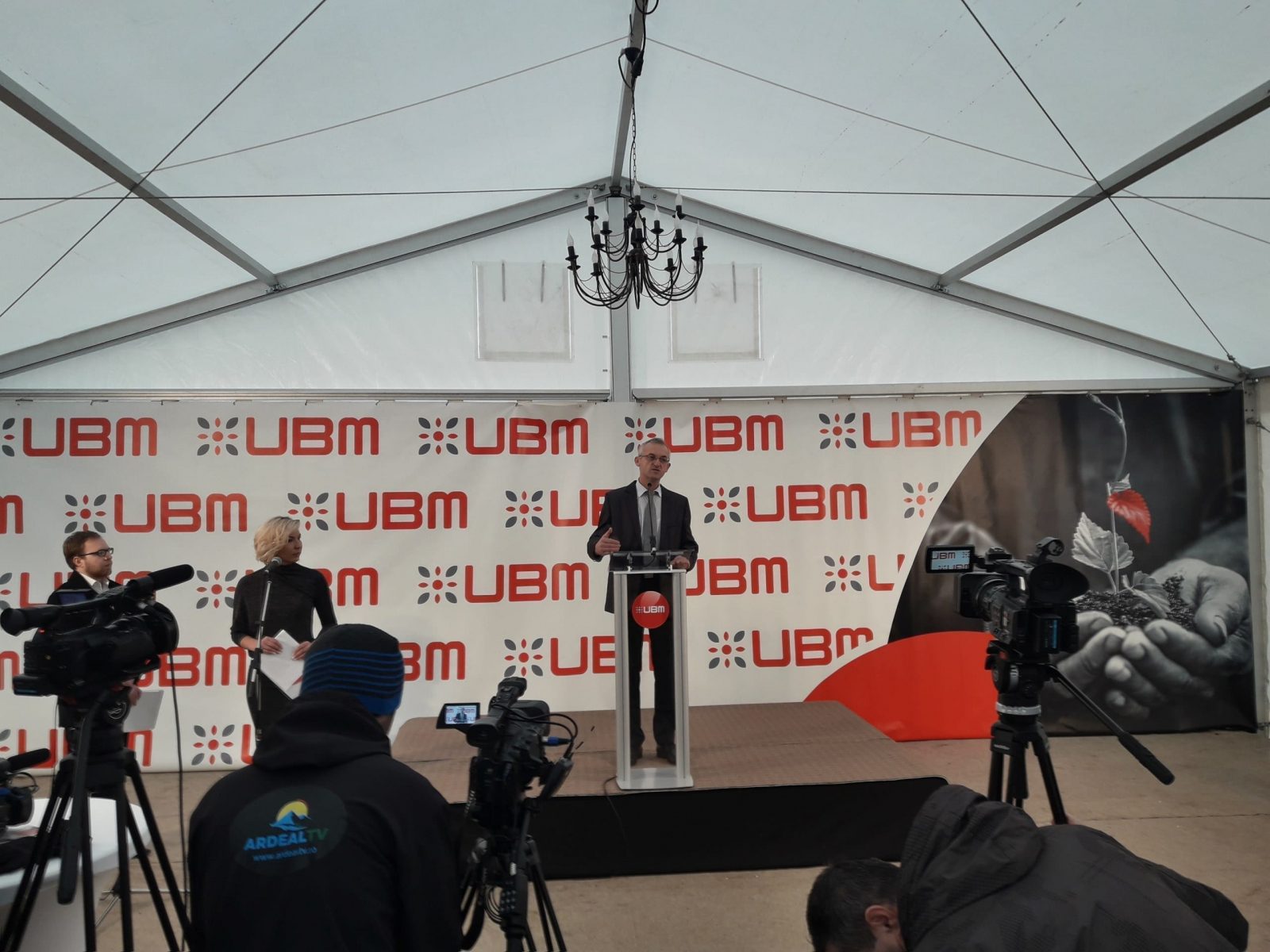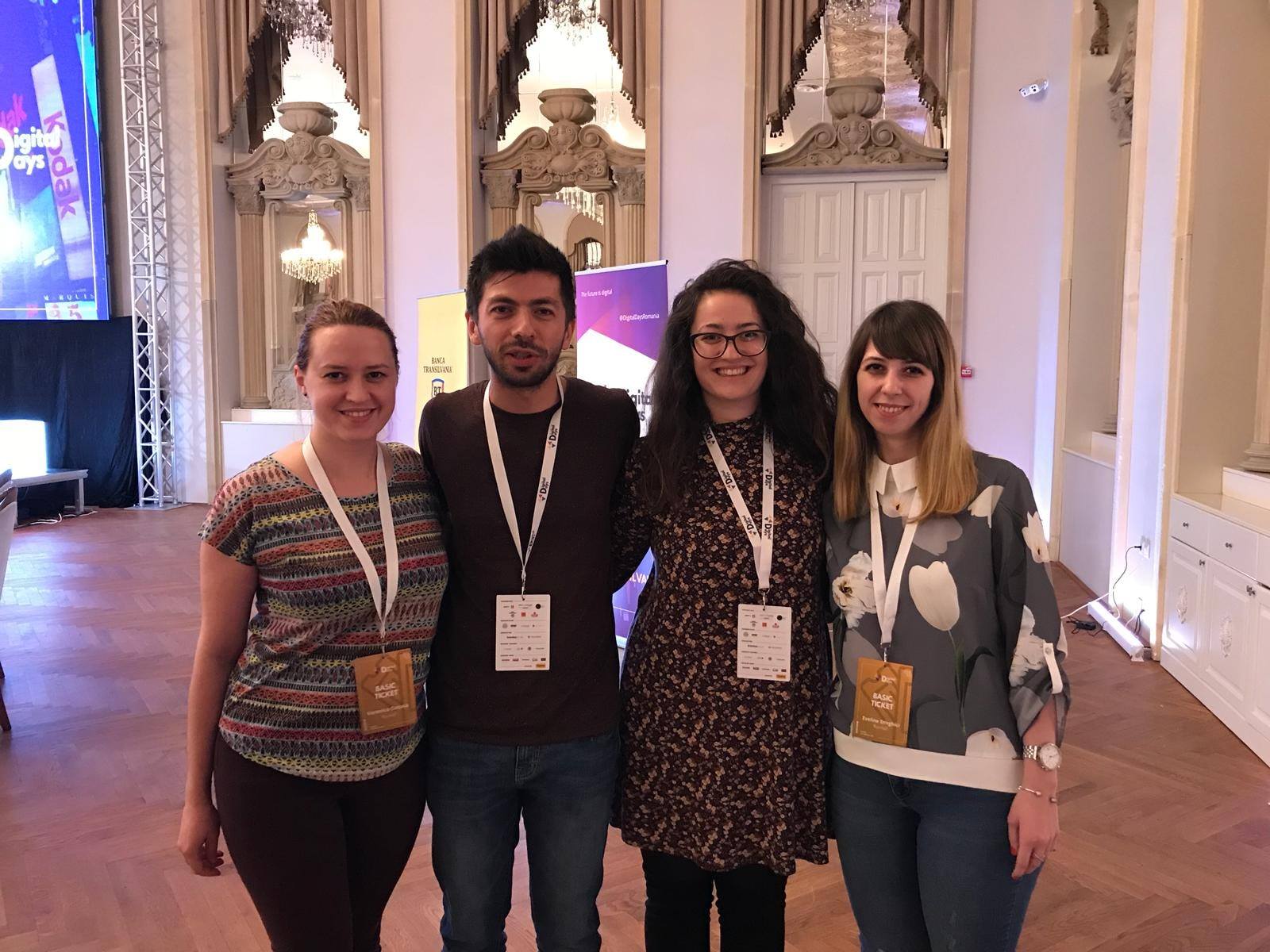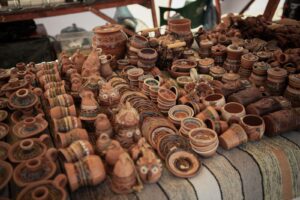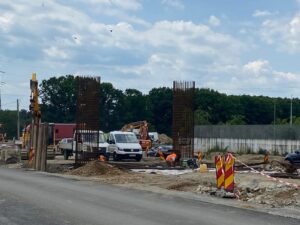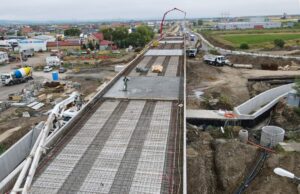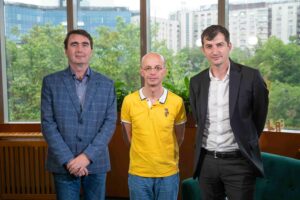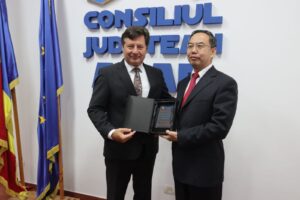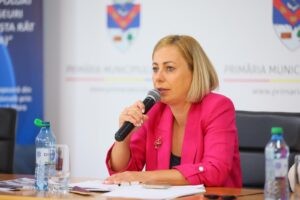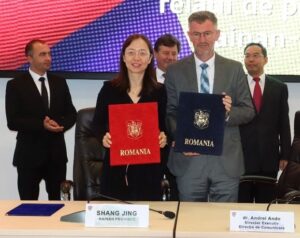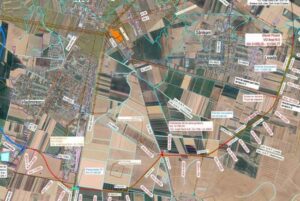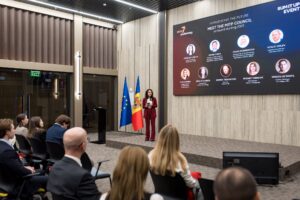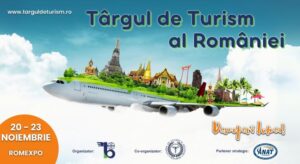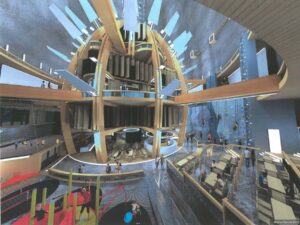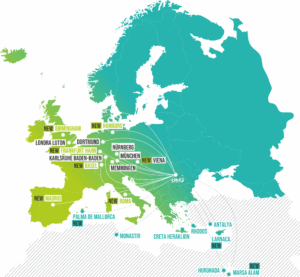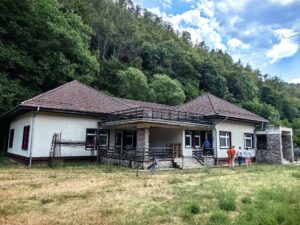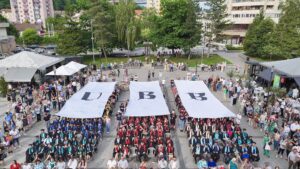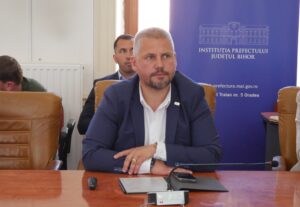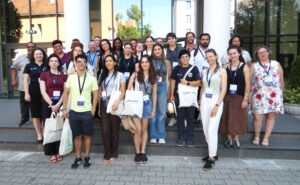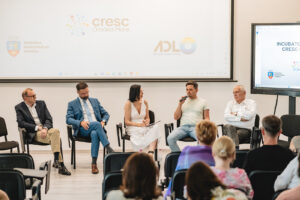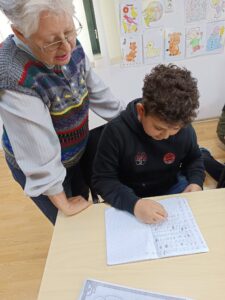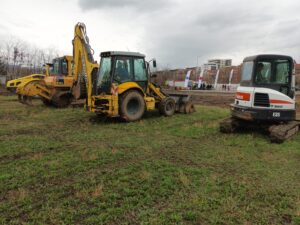The university life in Romania finds itself in a continuous search for form, identity and social function following the trends adopted immediately after the 1989 Revolution. The inertia of anachronic forms and ancient education methods specific to the communist period has made the reform of the university education system difficult primarily during the first post-revolutionary decade and the imposition of new methods and programs to delay their practical effect.
The legislative decisions already adopted at the beginning of the 90s, regarding the de-ideologizing of university education and university autonomy have represented the platform of higher education development in the last decades.
The anachronic status of the inherited university curriculum, the lack of specializations and competences claimed by the modern European society have forced the rapid creation of new faculties, departments, divisions and specializations in all universities as well as the establishment of research institutes related to the new specializations. Although some of them were made rather hastily, mimetically and initially as “forms without substance”, they proved in time their utility in the maturation process of the Romanian society faced with tendencies, habits and demands for which it was not prepared. The major challenge of the post-communist Romanian university was to adapt education to the European model and to diminish the inherited cultural handicap, by modernizing the verified methods of education as quickly and efficiently as possible and by introducing new fields, disciplines required by the progress of the rapidly changing society.
In the post-1989 crisis period – social model crisis, economic crisis, political uncertainty, lack of efficiency and authority of state institutions – the university was the one that maintained a social balance and provided standards by instantly adopting the European model, to which we certainly had to aim. At both cultural and political level, but also as an open society model based on information, knowledge, communication, exchange of goods and ideas, the university has constantly encouraged and supported the younger generations’ change of mentality. Additionally, predictive in terms of the changes that the Romanian society would have to bear in the difficult period called „transition” from communism to capitalism, from dictatorship to democracy, university programs were modernized and continuously adapted to provide knowledge, skills, qualifications of the students for new needs on the internal labor market or on the European one. Practically, only one generation had to progress from the bankruptcy model of the socialist planned economy to an efficient, dynamic liberal economy model, and from a closed, controlled society to a European-type of society. The education of this decisive generation in the recent history of the country has chiefly belonged to the university.
The Bologna European platform adopted on June 19, 1999 and signed by 29 ministers for education from the EU countries has redefined the goal of education in the present-day knowledge-based society. The education reform in the European space is supported by the collaboration of the education ministries and the higher education institutions with representatives of the European Commission, the Council of Europe, the UNESCO-CEPES, the students’ organizations and the ENQUA quality assurance agencies. Romania has aligned itself with the Bologna Process, fact that determined the restructuring of the entire university education system on several important directions. The academic system and the Romanian society have been progressively adjusting to be qualified for the European methodology and curricula. These changes have been in fact imposed by the modifications introduced in the Education Law soon after 1999. The reform’s important points are the following: a) structuring the three-cycle specialization system – the bachelor’s degree, master’s degree, doctorate; b) mobility of the academic staff, specialists and students within the European institutions; c) European cooperation in order to ensure the university education quality standards; d) close correlation between the students’ education and the professions/skills required by the labor market; e) permanent learning as a necessary condition for the skill and competence accumulation simultaneously with the rhythm in which the society based on knowledge, technology and competition evolves.
Several of Romania’s current universities were founded shortly after the 1989 revolution, in the early ’90s, on the structure of former higher education institutes, which had been functional in the communist era or by the integration of certain autonomous faculties and institutes or local branches of certain large regional universities. Mention must be made that in the early ‘90s the faculties with technical and agronomic profile knew a sudden decline together with the economic failure of industry, farms and state agricultural property. Nevertheless, on the other hand, the humanities, classical studies, law and new specializations such as psychology, informatics, information technology, mass-media and television, public administration, communication, public relations, European studies, security studies, as well as certain new branches of medicine have emerged at a fulminant rhythm among the universities.
The university curriculum’s new configuration was also improved by the development of computer science, computer industry and communication technology at an accelerated pace, resulting in the modification of the entire professional configuration of the current society. Furthermore, the creation of the global Internet communication network has also stimulated the education systems to adjust to this new information platform that has generated a genuine revolution whose consequences are hardly visible nowadays. The fact is that mankind has lately progressed in a new era of knowledge and communication technologies, where information is the essence of reality, which the means of communication and media turn into the global society’s common good.
The universities, as places of elite formation, encourage the assimilation of information at the highest level and support society through the specializations and competencies provided to the students. The specialists are the “soldiers” dispatched to the front of the future, as the specialization tendency is increasingly obvious and any social or individual issue is addressed to the „experts”, waiting for their solution. The modern societies’ progress unfolds from top to bottom, from the level of performing specialists and technologies to the mass level, by means of education, specialization and skilled trades, which involve further information and technology. Given that the new societies’ activity is grounded on information, the media have become the younger generations’ education and training instruments. This proves that school, with its traditional methods and programs, is no longer the unique educational institution, but just one of them. In principle, the school endeavors to play the most important part in the infinite flow of generally accessible information. The university is the institution that filters useful, forming knowledge, ideas, paradigms and cultural values of the recent “fluid” society, as defined by Z. Baumann.
In the early ’90s, universities have been founded in Transylvania in almost all the large cities, some state universities, other private, and the local communities’ life was stimulated and largely shaped by the evolution of university activity. The cities with the best rhythm of development and notable performances both on cultural and administrative levels and as life standards are precisely those where university activity is very dynamic. Examples are Cluj, Timişoara, Braşov, Oradea, Alba-Iulia, Sibiu, and Târgu Mureş. Academically structured knowledge is both an instrument of recent society’s development and a capital that can be invested in constructing our future. The course of knowledge through the information and technologies that generate, disseminate and instrumentalize it, is currently the driving force of social development and probably the decisive factor in configuring the world of tomorrow. Intelligence, innovation, and human creativity nowadays require technical support to act efficiently in the cultural and social evolution of the world we inhabit.
*
The Babeş-Bolyai University in Cluj-Napoca is named after two scholars of European reputation: the bacteriologist and morpho-pathologist Victor Babeş (1854-1926), born in Vienna in a Romanian-Austrian family and the Hungarian mathematician János Bolyai (1802-1860), the author of the non-Euclidean hyperbolic geometry. The remote origin of the University of Cluj lies in the Jesuit College having the rank of academy and teaching in Latin, founded by the prince of Transylvania, Ştefan Báthory in 1581. Another important school in Cluj was the Unitarian College established in 1557, which carried out its activity in a former Dominican monastery in the central area of the city. Its first headmaster was David Francisc, who would establish later the Unitarian Church. Moreover, soon after the religious Reform, Cluj became the most important education center in Transylvania.
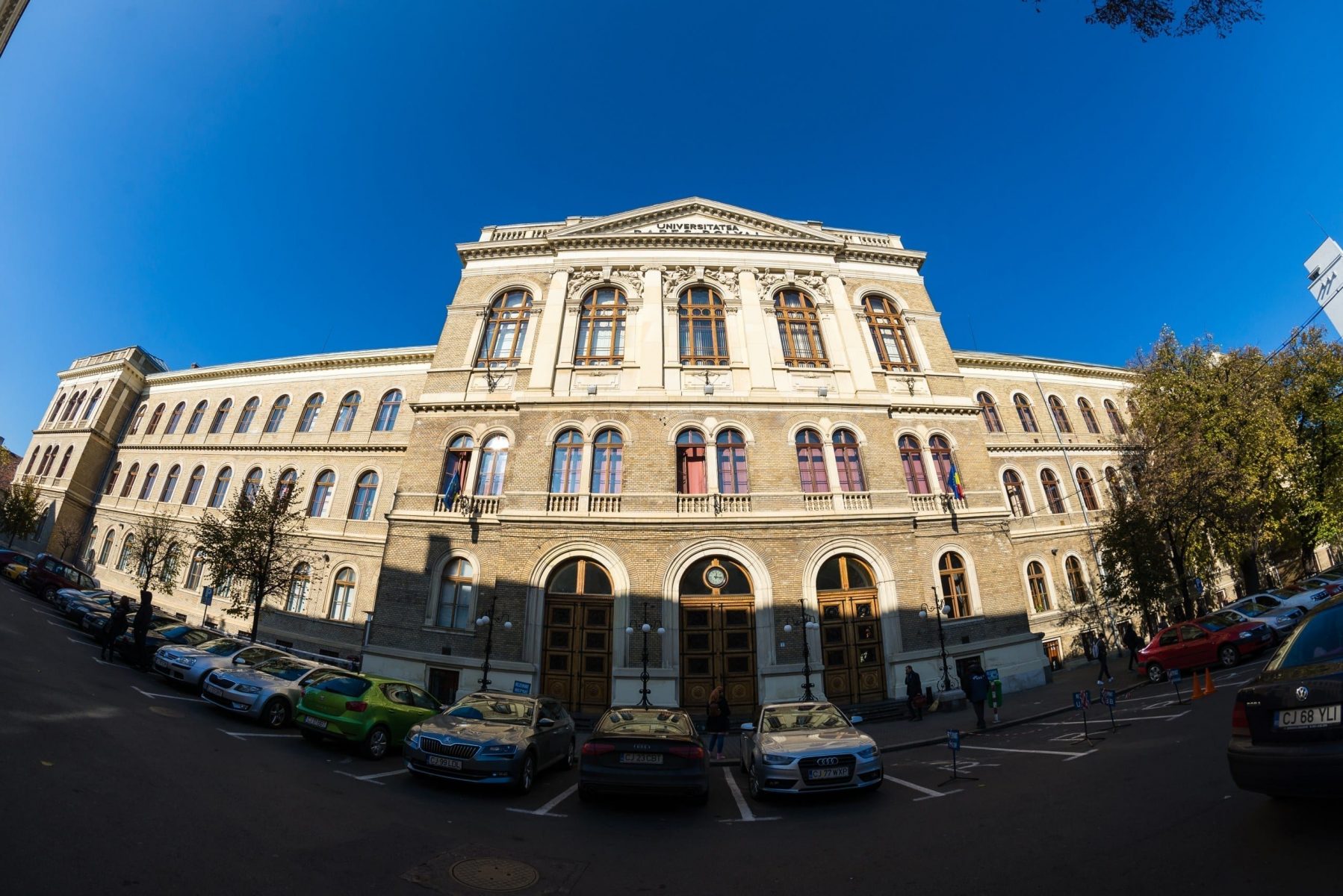
After the Jesuit order’s suppression in 1774, the college was transferred to the Piarist Catholic Order administration and was awarded the title of Universitas, including chairs of Theology, Philosophy, Medicine and Law. The Romanian University of Cluj was founded only in 1919 and it was named Dacia Superior University, while since 1927 it was named King Ferdinand I, which would change in 1948 as Victor Babes University. The state university called the Bolyai University, founded in 1945, with Hungarian as language of instruction, functioned concomitantly. The current designation has lasted since 1959, acquired by the merger of the Romanian University Victor Babeş with the Hungarian University János Bolyai. The first rector was the renowned historian and archaeologist Constantin Daicoviciu. At the time of the merger there were functioning only six faculties: The Faculty of Mathematics and Physics, the Faculty of Chemistry, the Faculty of Natural Science and Geography, the Faculty of Philology, the Faculty of Legal Sciences, the Faculty of History and Philosophy.
After the 1989 revolution, with the recovery of academic autonomy, the Babeş-Bolyai University encouraged the development of new teaching departments in Hungarian and German languages, thus becoming the higher education institution in Romania with the most pronounced multicultural character, representing the main communities in Transylvania. Today it is the largest university in Romania and among the largest in Central Europe, with over 42,000 students enrolled in bachelor, master and doctoral programs. It includes 21 faculties, 516 study programs conducted in Romanian, Hungarian, German, English and French. Owing to the four existing faculties of theology – Orthodox Theology, Reformed Theology, Roman Catholic Theology and Greek Catholic Theology – the principal religious communities from Transylvania are represented in the university programs.
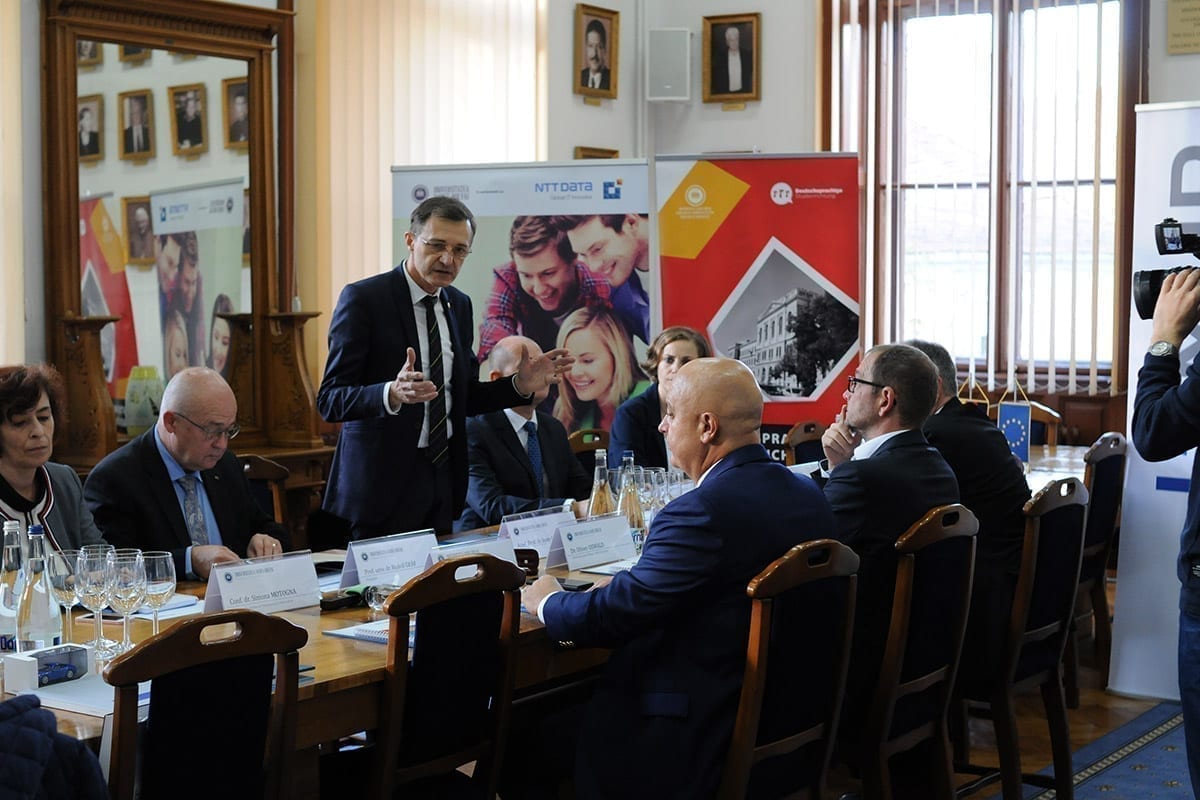
In addition to the faculties in Cluj, the university also has 12 extensions in several cities from the neighboring counties. There is also a considerable number of institutions playing an important part in the life of the students and the community administered by Babes-Bolyai University, such as:
Alexandru Borza Botanical Garden, with a surface of 14 hectares and over 10,000 plant species representing the flora from the main areas of the world, a botanical museum and an herbarium gathering about 635,000 samples from all over the world;
Iuliu Haţieganu Sports Park, comprising outdoor football, tennis and rugby fields, track of athletics, two swimming pools, an athletics hall and football, volleyball, basketball and tennis halls. Here the Faculty of Physical Education and Sports, as well as the members of the sections of the University Club are carrying out their activities;
The Lucian Blaga Central University Library situated in a palace designed by architects Kálmán Giergl and Flóris Korb and built between 1906 and 1908. It is the largest library in Transylvania, one of the oldest and most important in Romania, comprising over 3,800,000 volumes, among which 500,000 periodicals, 55 reading rooms providing over 2,100 seats, and medieval incunabula collections. Each year the library is attended by over 400,000 readers, the majority being students and researchers;
The Museum of Mineralogy of the Faculty of Biology and Geology, which comprises a collection of minerals and mineral rocks, processed gems and meteorite samples, approximately 16,500 samples in total;
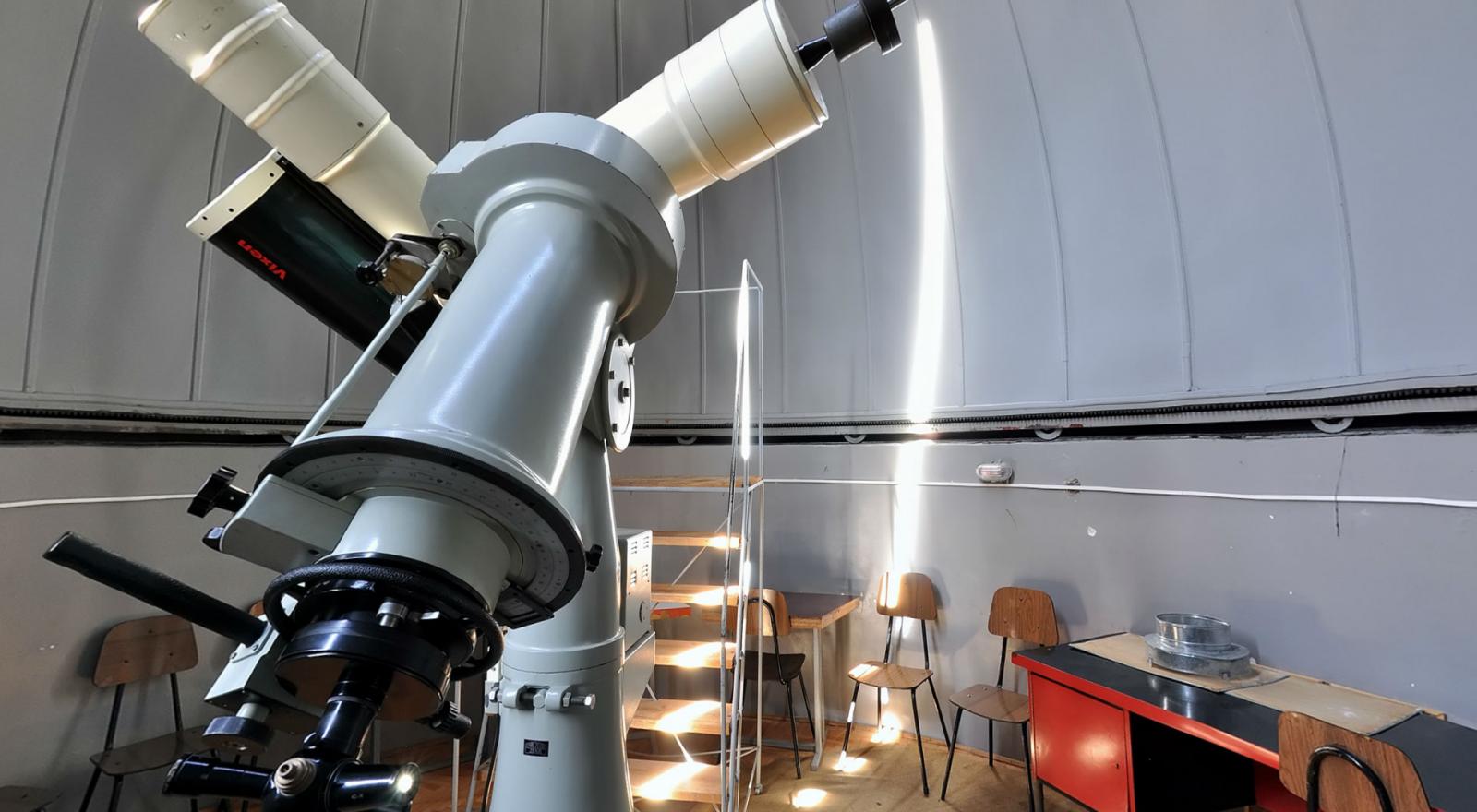
The Astronomical Observatory, located in the Botanical Garden, equipped with an artificial satellite tracking station, a 15 cm lens diameter refractor, a passive telescope and a photo lab.
The Iuliu Haţieganu University of Medicine and Pharmacy from Cluj-Napoca was established in several stages through the development of the Faculty of Medicine, included in 1919 in Dacia Superior University, where Iuliu Haţieganu was a professor and the first dean. In 1948, the Institute of Medicine and Pharmacy was created, where the Faculties of General Medicine, Hygiene, Pediatrics, Dentistry and Pharmacy were functioning. In 1990 the University of Medicine and Pharmacy was instituted, being renamed in 1993 after Haţieganu. Three faculties are functioning in the frame of the university, providing 12 specializations, with over 9,000 students enrolled in bachelor, master, residency and doctoral programs, among whom over a quarter of foreigners from approximately 50 countries. The teaching languages are Romanian, English and French.
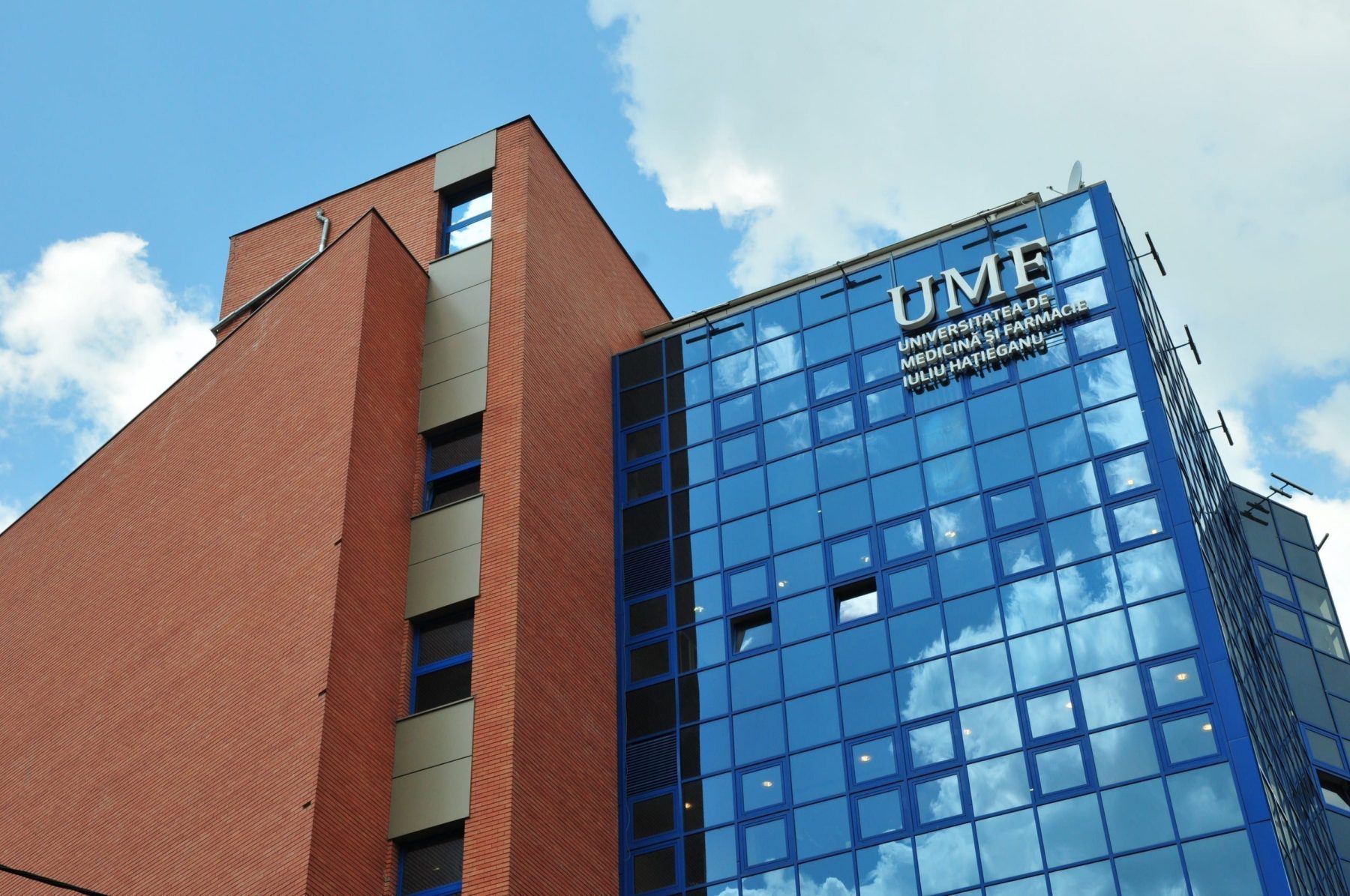
The Iuliu Haţieganu University of Medicine and Pharmacy has a Center for Practical Skills and Simulation, unique in the country, where the students can practice and form their practical skills in most specialties and at all levels, both in usual situations and those that require rapid intervention. The center is organized modularly. It has specific laboratories for basic medical operations, for emergency surgery, basic surgical techniques, for anesthesia and intensive care, for ultrasonography, endoscopy, as well as a surgery room for simulation and operations on animals.
The UMF students, resident doctors, doctors working in hospitals and medical centers in Cluj, students and doctors from other university centers, trained in research programs or experience exchanges with those from Cluj can benefit from the center facilities.
The University of Agricultural Sciences and Veterinary Medicine of Cluj-Napoca is one of the oldest agricultural high schools in Europe. It inherits the Institute of Agronomic Education Cluj-Mănăştur founded in 1869, which was promoted in 1906 at the academy rank and renamed as the Academy of Agriculture Cluj. After 1990 the university was reorganized into four faculties – Agriculture, Horticulture, Zootechnics and Veterinary Medicine, providing bachelor, master and doctoral programs. Alongside these faculties a Department of Teaching Staff Training and a Quality Assurance Department are also functioning. Besides the University of Agricultural Sciences and Veterinary Medicine the Research and Development Center for Pomiculture is carrying out its activity. In over 60 years of existence it has developed and homologated 27 varieties in the fruit-growing field, which have been included in the national patrimony.
The Technical University of Cluj-Napoca is the result of the Polytechnic Institute’s reorganization in 1992, which has functioned in Cluj since 1953. In 2011, the Technical University of Cluj merged with the North University of Baia Mare, resulting in a new institution called the Technical University of Cluj-Napoca – North University Center in Baia Mare.
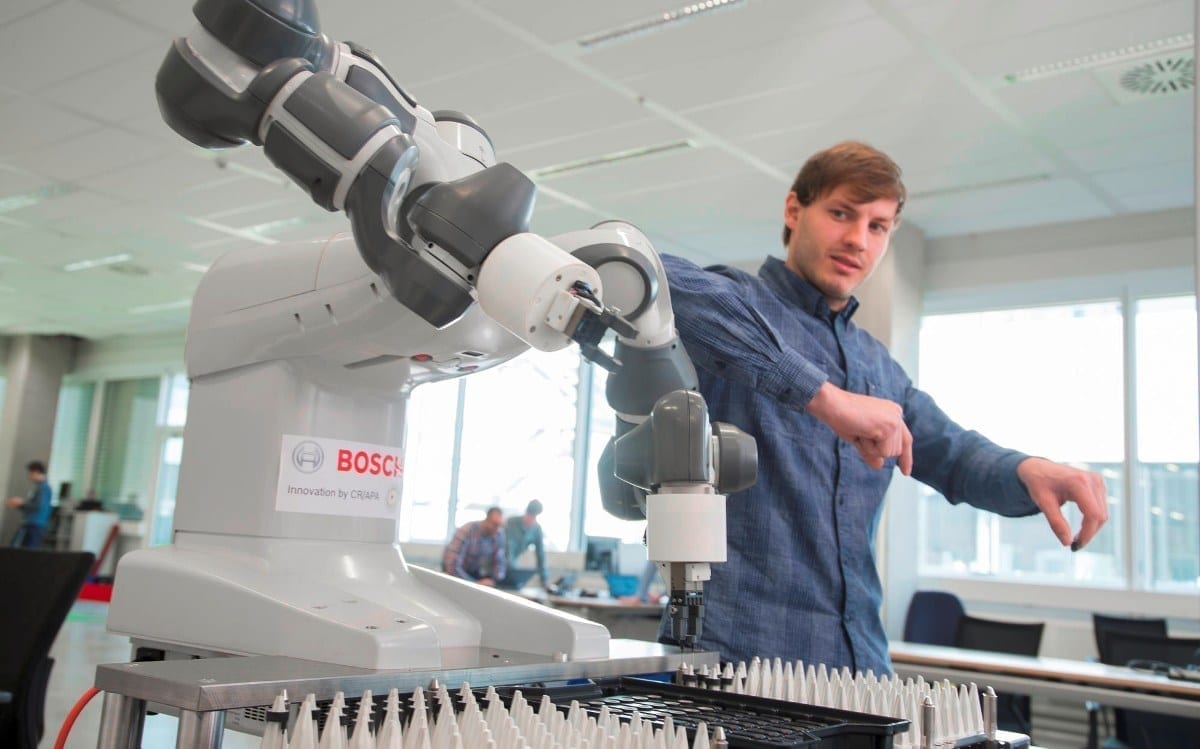
Owing to this decision, the number of faculties augmented to 12, and the number of students exceeded 22,000, the second in size among the universities established in Cluj. It provides bachelor, master and doctoral study programs as well as continuous training programs, conducted in Romanian, English, French and German. Furthermore, each faculty has research structures, groups and collectives, laboratories, centers and research platforms in the fields of: Information and Communication Technology, Advanced materials, Advanced products and processes, Efficient use of energy. The Technical University has extensions in Alba Iulia, Bistriţa, Satu Mare and Zalău.
The University of Art and Design in Cluj-Napoca, developed after 1990 from the former Ion Andreescu Institute of Fine Arts, has become in the last decade the most renowned Romanian art school owing to the recognition and international success of the young artists educated in Cluj – Victor Man, Adrian Ghenie, Ciprian Muresan, Mircea Cantor, Serban Savu, Radu Comsa, Marius Bercea.
The pedagogical quality and the artistic creativity have developed at UAD Cluj at a rate that no one of the Romanian art schools has reached after the revolution. Furthermore, the school of Cluj has reached in no other field such a high level and has not raised the graduates to an indubitable international reputation like the art school, particularly the painting. The education programs, the quality of the teachers-artists, the great international opening of the rectors Ioan Sbârciu, Radu-Călin Solovăstru and the chancellor Radu Pulbere, as well as the presence in Cluj of eminent artists like the painter Corneliu Brudaşcu contributed to this phenomenon. Emulated and frequented by the best and most visible artists of this young generation, grouped around the art management concept called Plan Gallery B, Master Brudaşcu was „the unseen part of the iceberg, what is unanimously accepted as the School of Cluj” – Mircea Cantor.
Owing to the concept of artistic management promoted by Plan B, the art of the Cluj school was promoted in exhibitions from Austria, Germany, Italy, France, England, USA, Turkey, and Israel. The University has two faculties and a Doctoral School – the Faculty of Fine Arts and the Faculty of Decorative Arts and Design -, each with five departments and study programs structured according to the Bologna system in three cycles: bachelor, master and doctoral degrees. Moreover, besides the specialization programs, the Cluj University of Arts has assumed the task of cultivating tradition – to the extent that art experiences an organic evolution in history, through uninterrupted links from one epoch to another, and from one style to another -, and artistic innovation and creativity as well. These tasks are meant to facilitate the young artists’ integration into the contemporary trends and styles, where multi-art and performance concepts are reaching a wider space of manifestation.
The University of Medicine, Pharmacy, Sciences and Technology of Târgu Mureş is the university consortium created in 2018 by the merger of the University of Medicine and Pharmacy (Marosvásárhelyi Orvosi és Gyógyszerészeti Egyetem in Hungarian) with the Petru Maior University (Petru Maior Egyetem in Hungarian).
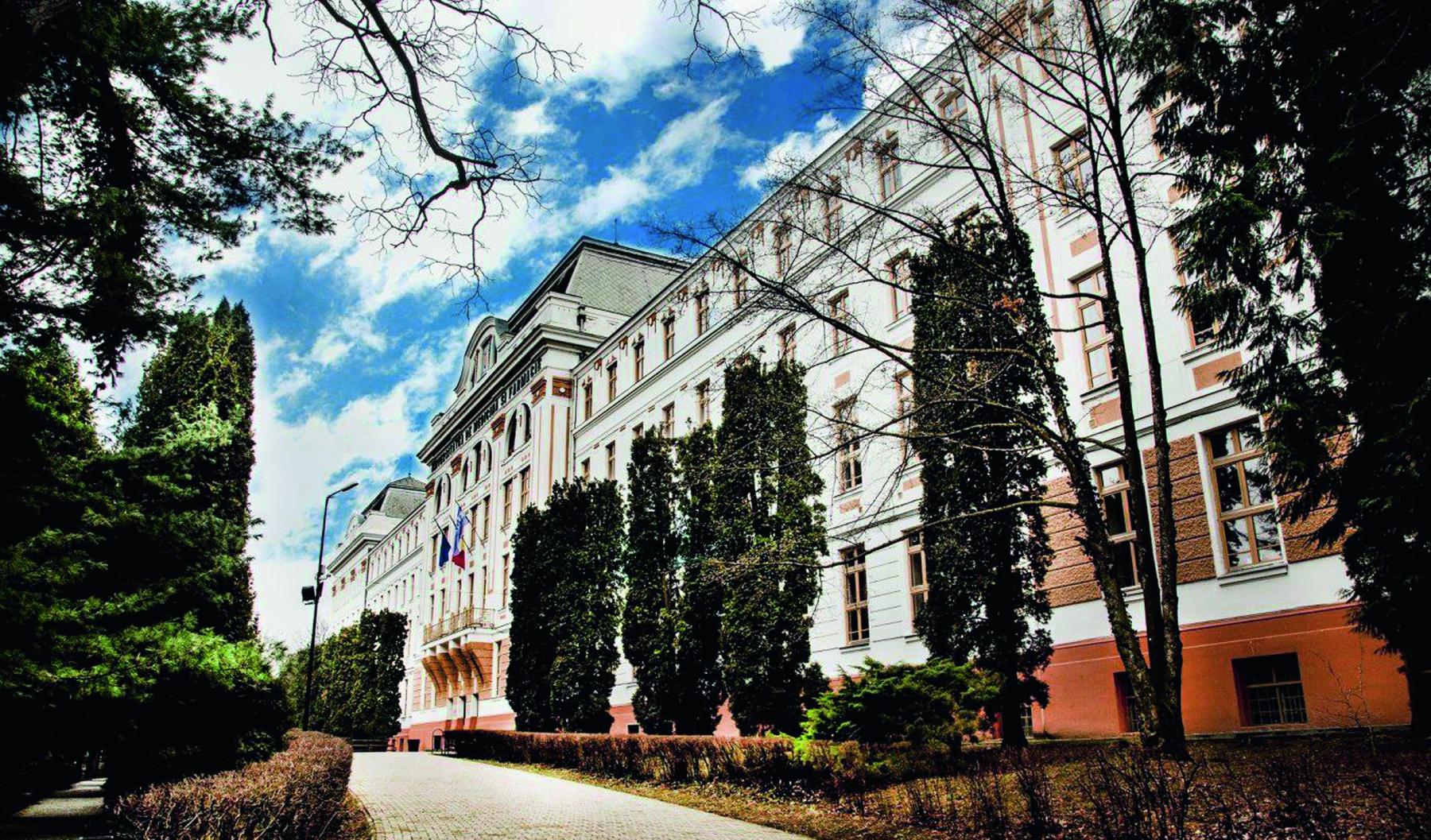
The University of Medicine and Pharmacy draws back its origin in the 16th century when, in 1565, the Diet of Transylvania decided the foundation of a medical college in Cluj, having the status of a free-royal city. In order to provide the optimal functioning of the college, qualified teachers from France and Switzerland were brought. At the beginning, the College was administered by the Jesuit Order, and after its abolition by the Piarist Order. After the Emperor Franz Joseph of Austria had established in 1872 a university in Cluj, which was named after him, a Hungarian School of Medicine with Hungarian language of instruction was functioning in its framework. After the First World War and Romania’s unification, the faculty of medicine with Hungarian language of instruction moved to Szeged. In 1940, the Franz Joseph University was re-established in Cluj, and in 1945 it was renamed the Bolyai University. Its Faculty of Medicine was then moved to Târgu Mureş in the Hungarian secessionist style building of a former military high school built between 1906 and 1907 by the City Hall. After the 1948 education reform, the Medical-Pharmaceutical Institute (Orvosi és Gyógyszerészeti Intézet in Hungarian) with Hungarian language of instruction was established, comprising faculties of general medicine, pediatrics, hygiene, dentistry and pharmacy, whose first rector was the famous dentist, author of specialty literature and writer Lajos Csőgör. In 1962 the Romanian section was established within the Institute. The University of Medicine and Pharmacy in Târgu Mureș, has the status of a multicultural university with Romanian and Hungarian languages of instruction.
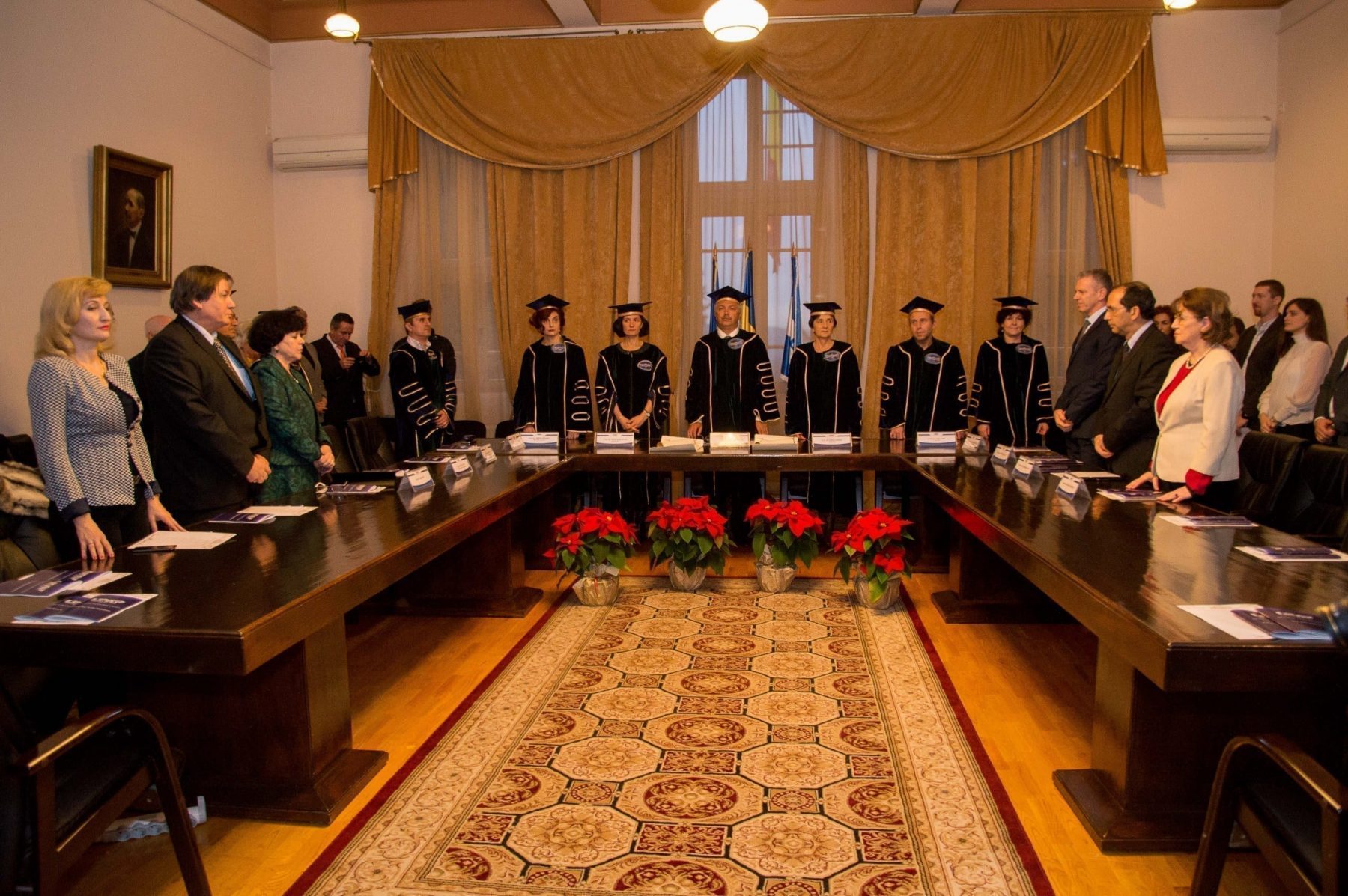
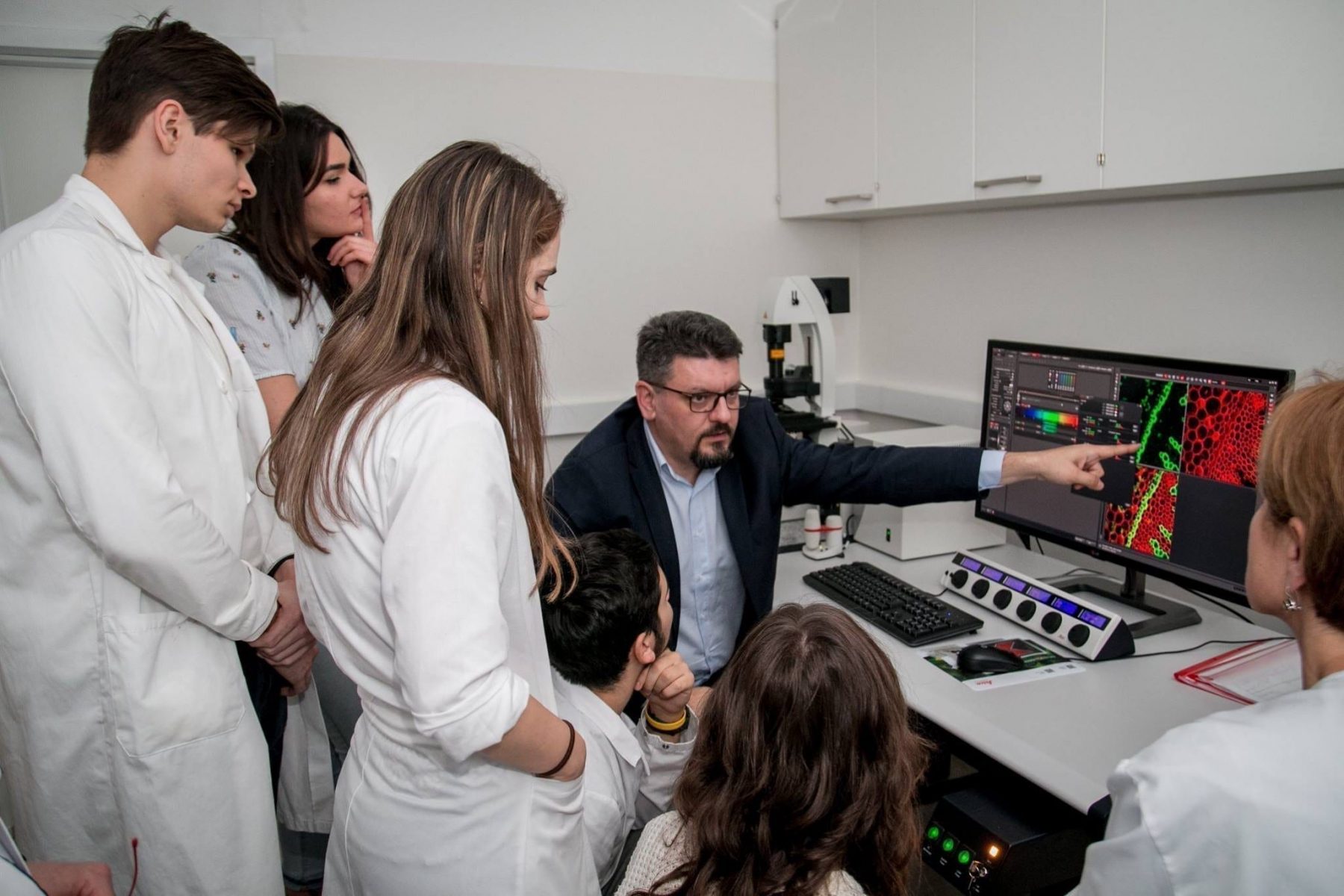
In 2018, the senates of the University of Medicine and Pharmacy of Târgu Mureş and Petru Maior University of Târgu Mureş (the heir of the Pedagogical Institute established in 1960, subsequently renamed Higher Education Institute) adopted the merger decision through the absorption of the Petru Maior University by the University of Medicine and Pharmacy in Târgu Mureş, thus creating a new institution with more than 10,000 students.
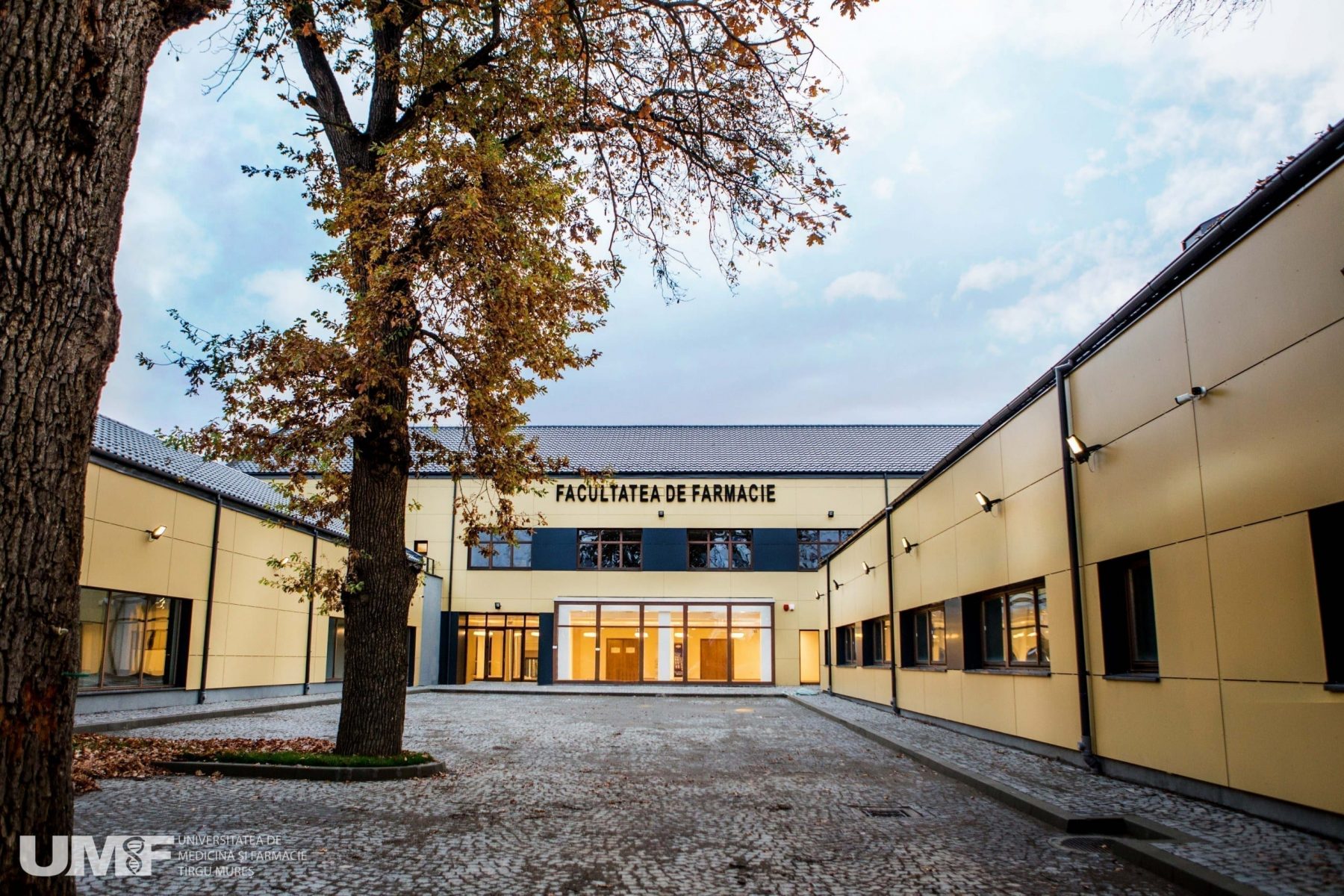
As a result of the merger, the university increased its faculty number to six. Within it there are functioning – the Faculty of Medicine, the Faculty of Dental Medicine, the Faculty of Pharmacy, the Faculty of Engineering, the Faculty of Sciences and Letters, the Faculty of Economics and Law – with bachelor, master and doctoral degree programs.
The University of Arts in Târgu Mureş (Marosvásárhelyi Művészeti Egyetem in Hungarian), with Romanian and Hungarian instruction languages, is the heir of the Hungarian Conservatory of Music and Dramatic Art founded in Cluj in 1946 by a decree signed by King Mihai, the Minister of Arts, Mihail Ralea, and the Minister of Finance, Gheorghe Tătărescu. In the framework of the 1948 public education system reform, the Romanian Institute of Art with dance, music and acting departments was created in Cluj, and the Hungarian Art Institute, which functioned with music, drama, acting and dance faculties. In 1950, the two institutes’ theater faculties merged, and the Szentgyörgyi István Theater Institute was founded with Romanian and Hungarian instruction languages. In 1954, following a new restructuration, the directing specialization from the Hungarian department and the entire Romanian department of Szentgyörgyi István Theater Institute in Cluj were transferred to the I.L. Caragiale Institute of Theater and Cinematography in Bucharest, and the acting specialization from the Hungarian department was moved to Târgu Mureş under the institute’s title. Since 1972, the Hungarian language directing studies have been resumed, and since 1976 the Romanian acting department has been re-established. In 1992 Szentgyörgyi István Theater Institute was turned into the Academy of Theater Arts, and in 1998 it became the Theatrical Art University through a government decision. In 2009, the University’s name changed from the Theatrical Art University in Târgu Mureş to the University of Arts in Târgu Mureş.
The „1 Decembrie 1918” University of Alba Iulia was created in 1991 and comprises five faculties – the Faculty of History and Philology, the Faculty of Law and Social Sciences, the Faculty of Exact and Engineering Sciences, the Faculty of Economic Sciences, the Faculty of Orthodox Theology – offering study programs organized in three cycles according to the Bologna model, the bachelor, masters and doctoral levels. The name of the university is connected to the historical significance of the day of December 1, 1918, the day of Romania’s unification, when the city of Alba Iulia became the symbolic capital of the country.
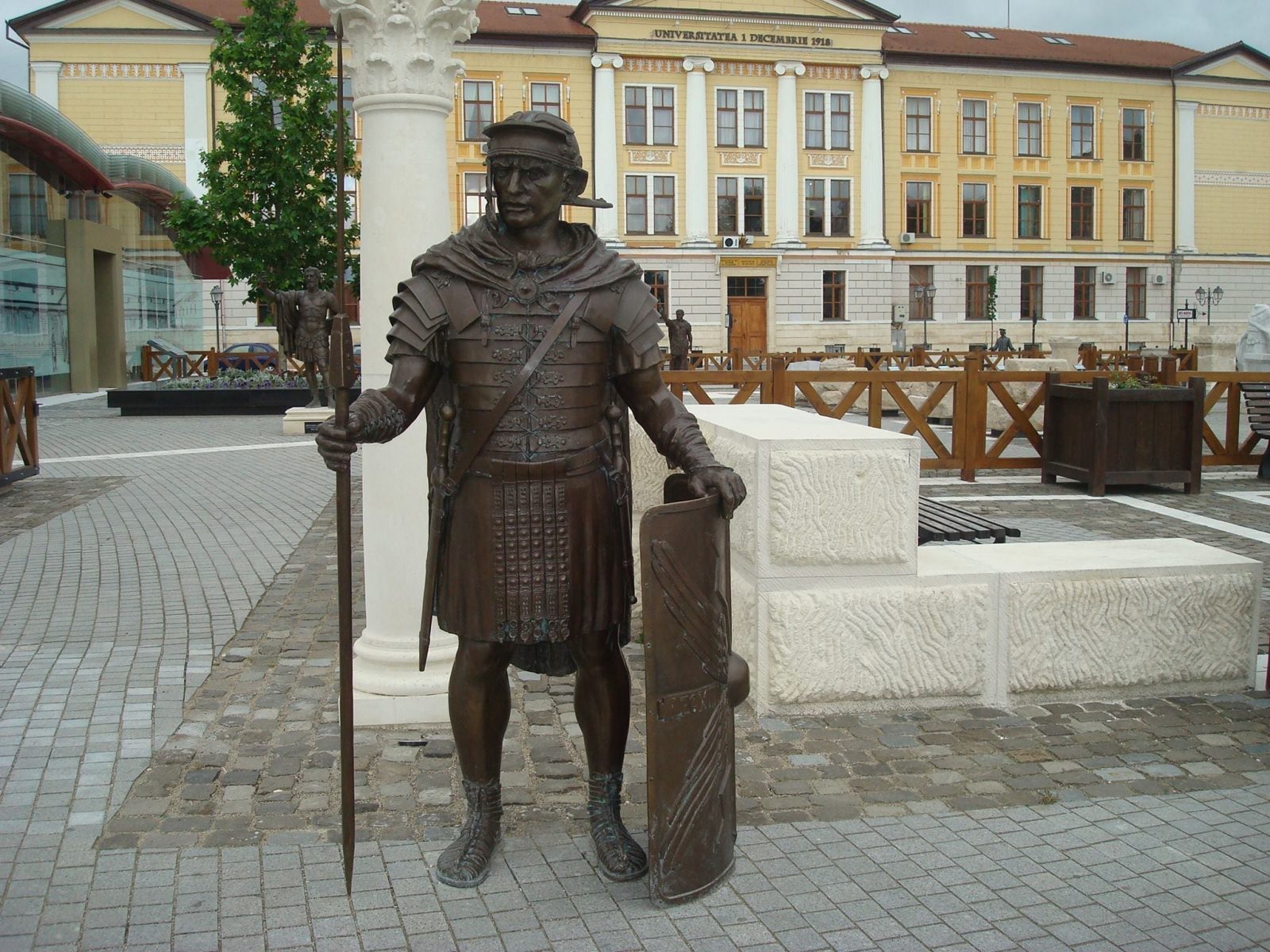
Academic education in Alba Iulia began in the 17th century with the humanities high school founded by Prince Gabriel Bethlen in 1622, which was the second university school in Transylvania alongside the one founded by the Jesuits in Cluj. The school functioned in a building made in the late Renaissance style of the Alba Iulia Fortress. In 1629 Collegium Academicum Bethlenianum was raised to an academic school level, where faculties of philosophy, theology and philology with Latin language instruction were functioning. Among the teachers who taught at this college mention must be made of the father of German literature, the Silesian poet Martin Opitz, as well as the famous scholars Johannes Henricus Alstedius, Johannes Henricus Bisterfeldius, Johannes Piscator and Isaacus Basirius. Alstedius, considered one of the most important European polyhistors at that time, who had taught for 9 years in Alba Iulia, where he printed a part of his textbooks and writings.
Also, Bishop Anton Sigismund Sztoyka established in Alba Iulia a Roman Catholic seminary in 1753, called „Seminarium Incarnatae Sapientiae”, and in 1758 he constructed a building close to the cathedral for the institute of theology. After the suppression of the Jesuit Order, Empress Maria Teresa transferred the Jesuits’ church and monastery to the seminary together with the entire patrimony in 1778. The theologists taught their courses here until 1792, when Bishop Ignatius Batthyány obtained the Trinitarians’ former monastery. In the former church, the bishop organized the valuable Batthyaneum Library, and the Roman Catholic Theological Institute was installed in the inhabited part of the monastery, where courses have been taught until now.
The University of Oradea, created in 1990, has at present 15 faculties, 49 departments and 27 research centers, which provide 112 bachelor programs, 83 master programs and 12 doctoral programs for the over 18,000 students. The post-graduate studies and research programs provided by the Oradea institution contribute to the achievement to that objective included in the Bologna charter, which is continuous training. The Department of Permanent Education, which is functioning within the university has as its chief objective the very development of skills and the improvement of the knowledge accumulated in a form of initial education of an undergraduate, master or doctorate type. Through the activities in the field of continuous professional training the professional conversion/reconversion for the qualifications required by the labor market is envisaged, regardless of age. For this purpose, specialization courses and postgraduate training courses, workshops are provided.
The Oradea university center has a rich tradition, the first important institution being the Royal Catholic Academy of Law founded in 1780 by Empress Maria Tereza, with a Faculty of Philosophy and, beginning with 1788, a Faculty of Law, with Hungarian language of instruction. The Academy had functioned until 1919. In 1923, two Theological Academies were established, and in 1934, the Faculty of Law was transferred to the University of Cluj. The Pedagogical Institute, founded in 1963 in Oradea, had the Faculty of Philology and the Faculty of Mathematics and Physics, with the Faculty of Physical Education and the Faculty of History and Geography added one year later.
The West University of Timișoara was initially planned to be established in 1944 through a law passed by King Mihai, with specializations in Law, Letters and Philosophy, Sciences, Human Medicine, Veterinary Medicine, Pharmacy and Theology, but the respective decision has not been implemented anymore.

In 1948 the Pedagogical Institute was founded, with the Faculty of Mathematics-Physics, to which in 1956 the Faculty of Philology was added, and in 1959-1960, pedagogical faculties organized in three-year studies in the fields of History-Geography, Biology, Chemistry, Music, Fine Arts and Physical Education. In 1962, the five-year Pedagogical Institute, with the Faculty of Mathematics and Physics and the Faculty of Philology, was transformed into the University of Timișoara. The current name of the institution was adopted through an order of the Ministry of Education in October 1994. The West University has 11 faculties, which provide study programs structured according to the Bologna system in bachelor, master and doctoral cycles, around 13,000 students, out of which 4% are foreigners.
The Polytechnic University Timișoara is one of the Romanian advanced research and education schools, with a centenary tradition and both nationally and internationally acknowledged reputation. Founded in 1920 under the name of the Polytechnic School of Timișoara, it presently has 10 faculties and 25 departments providing bachelor’s, master’s and doctoral degree programs destined to 13,500 Romanian and foreign students. Furthermore the university has a Permanent Education Center established in 2000 with the aim of providing the institutional framework for the continuous training activities imposed by the dynamics of the specializations and qualifications lately emerging at the university level and on the labor market. The Center uses the faculty specialists’ didactic, research experience and expertise to create connections with local or regional economic actors, with local and central administrative institutions interested in investing in their own employees’ training and specialization. It is organizing postgraduate professional training and continuous education programs aimed at the graduates who intend to improve their level of qualification and competence in the field of practice or to acquire new qualifications. The fields where postgraduate studies are organized are selected by a systematic study of the labor market and the professional needs of our society, which is undergoing an accelerated dynamic both of adaptation to the structure/model of European society and of the qualification standards required by the transformation rhythm. In addition to the students’ education, qualification and training programs, the Polytechnic University of Timişoara carries out research programs through its centers and institutes, takes part in national and international project competitions, organizes conferences and debates on scientific and economic matters. It is engaged in regional and national economic life through cooperation at the level of technology transfer, expertise, consultancy, partnerships with trade factors. The university accomplishes annual collaborations with local, regional and national firms for consulting, research and development programs.
The University of Agricultural Sciences and Veterinary Medicine of Banat „King Mihai I of Romania” in Timişoara is the designation ascribed in 1995 to the former University of Agricultural Sciences of Banat (1991), whose structure was envisaged in the period of five years after the Dictate of Vienna, when the Faculty of Agronomy from Cluj was transferred to Timişoara. After 1945, the Faculty of Agronomy functioned within the Polytechnic of Timișoara. Today, six faculties are functioning within the university: the Faculty of Agriculture, the Faculty of Horticulture and Forestry, the Faculty of Agricultural Management, the Faculty of Veterinary Medicine, the Faculty of Agri-food Products Technology, the Faculty of Zootechnics and Biotechnology. Beginning with the 2005-2006 academic year, the university has adopted the Bologna system, organizing three specialization cycles. There are 13 undergraduate study programs, 15 master level programs and four doctoral study areas.
The Lucian Blaga University of Sibiu, founded in 1990, consists of 9 faculties with study programs organized on three cycles according to the Bologna system and approximately 14,000 students. The history of this university is closely connected to that of the Romanian University of Cluj, which was transferred to Sibiu after the Dictate of Vienna, where it had functioned until the end of the Second World War. At that moment the number of students in Sibiu increased to 3,400, and the Sibiu Literary Circle created around Lucian Blaga’s personality was born at the same time.
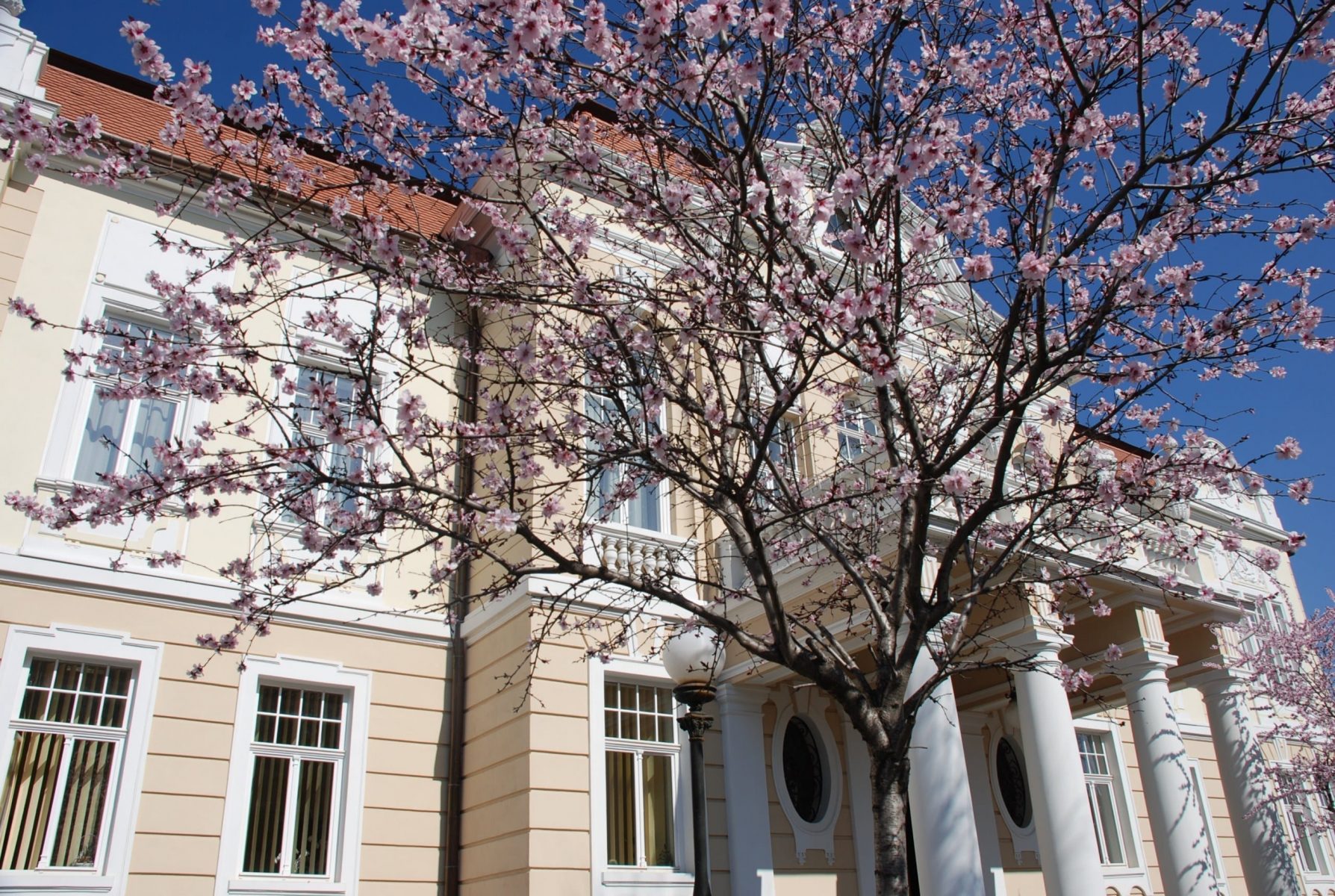
The members of the Circle have become notorious figures of the Romanian postwar culture: Ion Negoițescu, Radu Stanca, Cornel Regman, Ștefan Augustin Doinaș, I. D. Sârbu, Nicolae Balotă, Eugen Todoran, Eta Boeriu, Radu Enescu, Dominic Stanca. In 1969, the Faculty of History was established in Sibiu, as a branch of the Babeș-Bolyai University, which would become in two years the Faculty of Philology and History, with departments of Romanian, English and German. In 1976, the first autonomous institute of higher education was created in Sibiu, including the faculties of Philology and History, Economic and Administrative Law, and Machine Building Technology. After the Polytechnic Institute of Cluj-Napoca, had taken over the Faculty of Machine Building Technology, through restructuration, the rest of the faculties ceased to exist.
The Lucian Blaga University has an official program of internationalization, meaning crossing strictly national borders through the type of programs provided to the students and the cultivated skills and the students’ instruction for the European and global society.
The Transylvania University in Brașov, with its 18 faculties that provide for the approximately 20,000 students 105 bachelor programs, 73 master programs and 18 fields for doctoral studies, is the largest institution of higher education in the central area of Romania. The designation of “Transylvania” was adopted by the Brașov institution by a Senate decision and a ministerial decision in 1991. It is a university with a complex profile, which includes specializations both in the technical and medical, humanist, law, administrative and forestry fields, as follows: the Faculty of Mechanical Engineering, the Faculty of Technological Engineering and Industrial Management, the Faculty of Materials Science and Engineering, Faculty of Product and Environment Design, Faculty of Electrical Engineering and Computer Science, Faculty of Forestry and Forest Exploitation, Faculty of Wood Engineering, Faculty of Civil Engineering, Faculty of Economics and Business Administration, Faculty of Food and Tourism, Faculty of Mathematics – Computer Science, Faculty of Music, Faculty of Medicine, Faculty of Law, Faculty of Sociology and Communication, Faculty of Physical Education and Mountain Sports, Faculty of Letters, Faculty of Psychology and Education Sciences. It is a university with a complex profile, which includes specializations both in the technical and medical, humanist, law, administrative and forestry fields, as follows: Since the 2005-2006 academic year, the university has aligned itself with the structure of the Bologna system.

The University of Brașov was created in 1971 by merging two institutes, the Polytechnic and the Pedagogical ones, each of them comprising several departments and specializations. Presently, the university is structured on eight faculties, to which, during the 1990-1991 university year, the Faculty of Electrotechnics, the Faculty of Music, the Faculty of Sciences and the Faculty of Economic Sciences, then the Faculty of Medicine the following year were added. In 2002, the Faculty of Law and Sociology departs from the Faculty of Economics and the Faculty of Sciences is restructured as follows: Faculty of Mathematics and Computer Science, Faculty of Letters and Faculty of Sports and Physical Education. In 2003, the Faculty of Forestry departs from the Faculty of Forestry, and in 2004 the Faculty of Psychology and Educational Sciences is established. In 1995, the Faculty of Machine Building Technology was divided in two: the Faculty of Technologic Engineering and the Faculty of Materials Science and Engineering.
The Transylvania University in Brașov holds a pluridisciplinary Research and Development Institute, which was completed in 2013 and represents the largest investment in the research infrastructure of any university in Romania achieved with European funds. The aim of the institute is to stimulate research at national and international level and to increase the researchers’ competitiveness level. At the same time, through the research conducted there, the University of Brașov intends to provide expertise in regional business environment research and to correlate its research programs with the needs of innovation and business activity. The Institute carries out its activities in 11 buildings, which are hosting 30 research centers having state-of-the-art infrastructure and equipment for advanced research.
By Vianu MUREȘAN
(From the special edition of Transilvania Business 86 – „ENJOY TRANSYLVANIA!” – May/June 2019)
